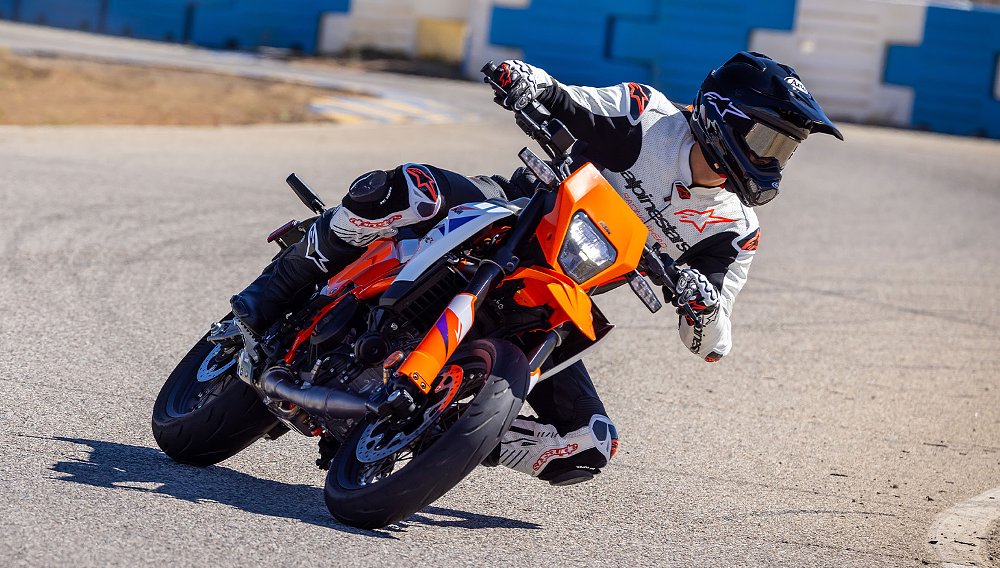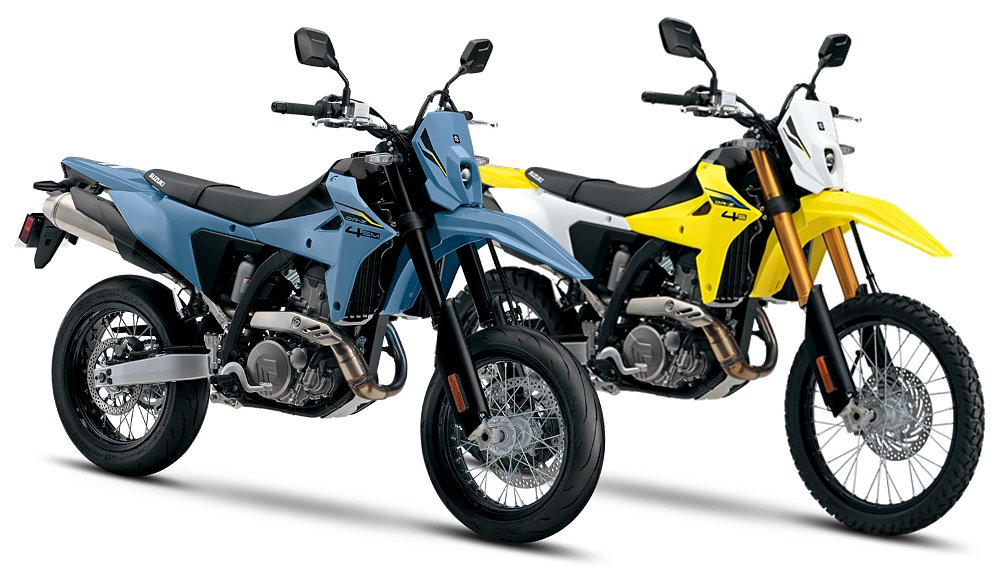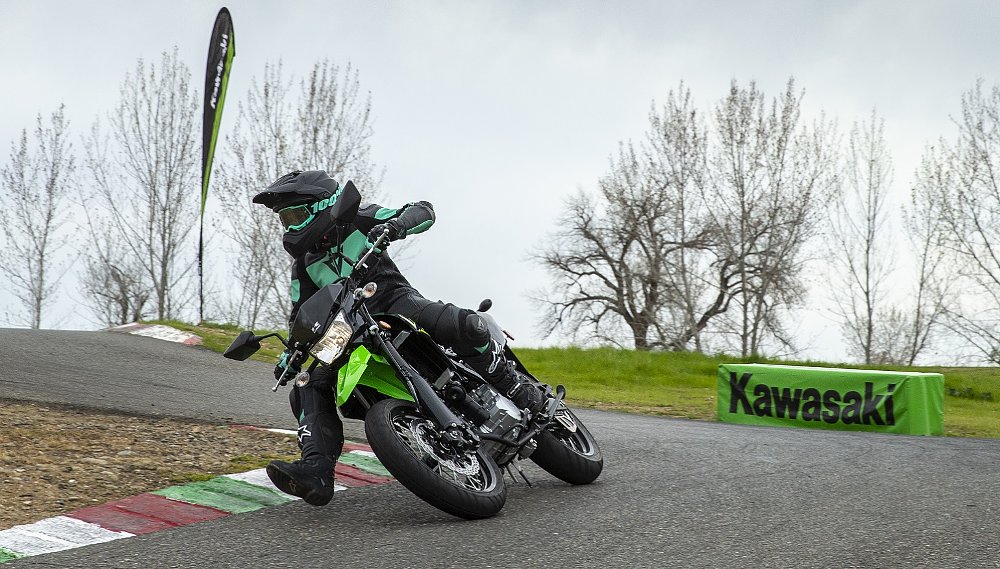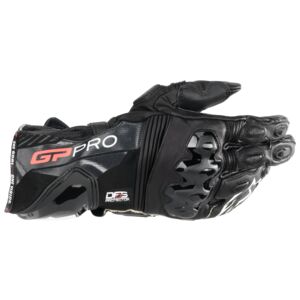I once owned a 2009 Suzuki DR-Z400SM. The keyword being “once.” Loath to fiddle with its fitful carburetor for all of eternity, I sold the bike less than a year after the purchase.
Before doing so, I exhausted all my options. Rejetting the stock carb did little to heal the cold-start stalls and boggy fueling. It sure didn’t stop the DR-Z from breaking down during a morning commute. That incident prompted a carb swap. Out was the 36 mm stocker. In stepped a 39 mm aftermarket unit. The results were just as disastrous, finding myself stranded on the roadside yet again.
From that point on, I avoided carbureted motorcycles. In other words, I avoided all DR-Zs. That’s not to say the 400SM was completely irredeemable. It was light on its feet. It squirted through traffic and carved up curves. It provided a wealth of in-helmet giggles — provided it was running well. That’s a qualifier Suzuki customers need not worry about with the all-new DR-Z4SM.
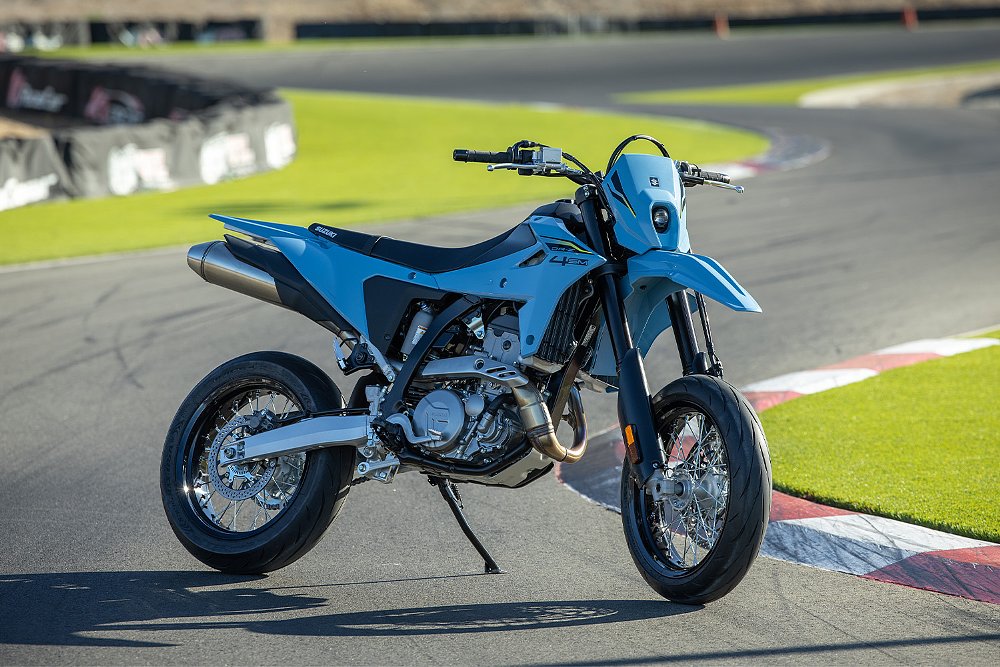
Is good enough good enough?
The revamped supermoto returns with key updates in 2025. The engine is reworked. The chassis is refined. The electronic rider aids are, well, existent. Most importantly (to me, anyway), fuel injection finally replaces the carburetors of old. This isn’t your granddad’s DR-Z. Yet, the jury is still out.
Many DR-Z detractors question whether the refreshed model addresses enough of its predecessor’s flaws. Given the DR-Z4SM’s hefty $8,999 price tag, it’s a valid question — one that Suzuki was also eager to address. To do so, the brand invited several moto journalists to Temecula, California, for a half-day ride on the streets and a half-day on track. The SuMo looks reborn on paper, but what truly matters is how its upgrades translate to the road. Much of that experience begins and ends with the model’s overhauled engine.
Singled out
By 2009, tightening emissions standards forced Suzuki to suspend the DR-Z400 line in all territories outside North America. To bring the range back to the global stage, the Japanese firm prioritized changes to the platform’s 398 cc single. It’s no minor endeavor, either. The thumper maintains the same architecture as past DR-Zs, but 80% of its components are either new or heavily revised. Many of those adjustments aim to lower the model’s carbon footprint.
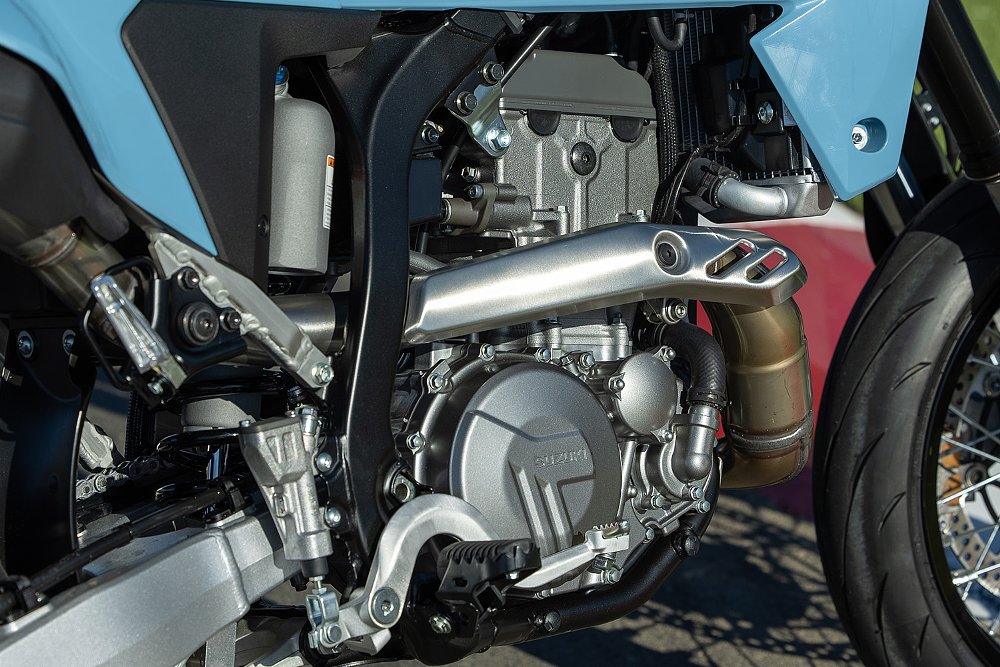
“To reduce hydrocarbons,” explained Suzuki Training & Publications Manager Avery Innis, “you have to reduce fuel getting into the exhaust.” The engineering team achieved that objective by decreasing the overlap between the intake and exhaust valves. The exhaust camshaft is chiefly responsible for minimizing those intervals. Meanwhile, the intake camshaft helps increase intake volume and enhance efficiency at lower rpm.
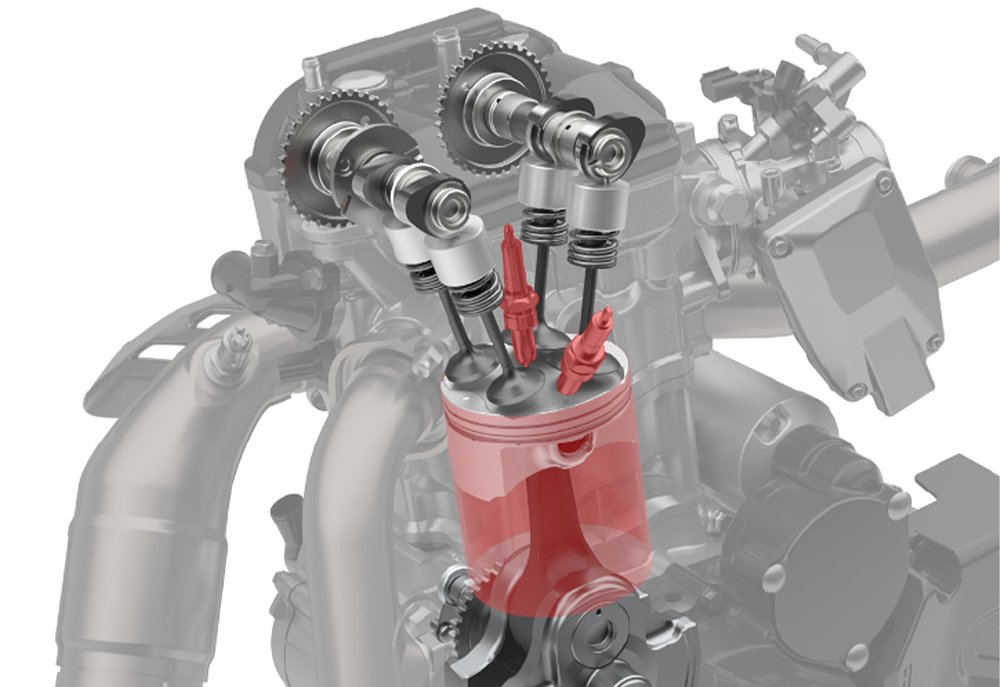
Suzuki still mounts the model’s airbox behind its engine, but air now enters through a notch between the seat and tail section. Even if the airbox maintains the same capacity as previous-gen DR-Zs, a wider, shorter inlet tube aids airflow. (So much for the three-by-three airbox mod commonly made to carb-fueled DR-Z400s.) That incoming air is then shuttled to a new 42 mm throttle body, which delivers fuel via a 10-hole injector. A dual spark plug system now ensures that fuel is burned in the combustion chamber, delivering on the goals Innis laid out above.
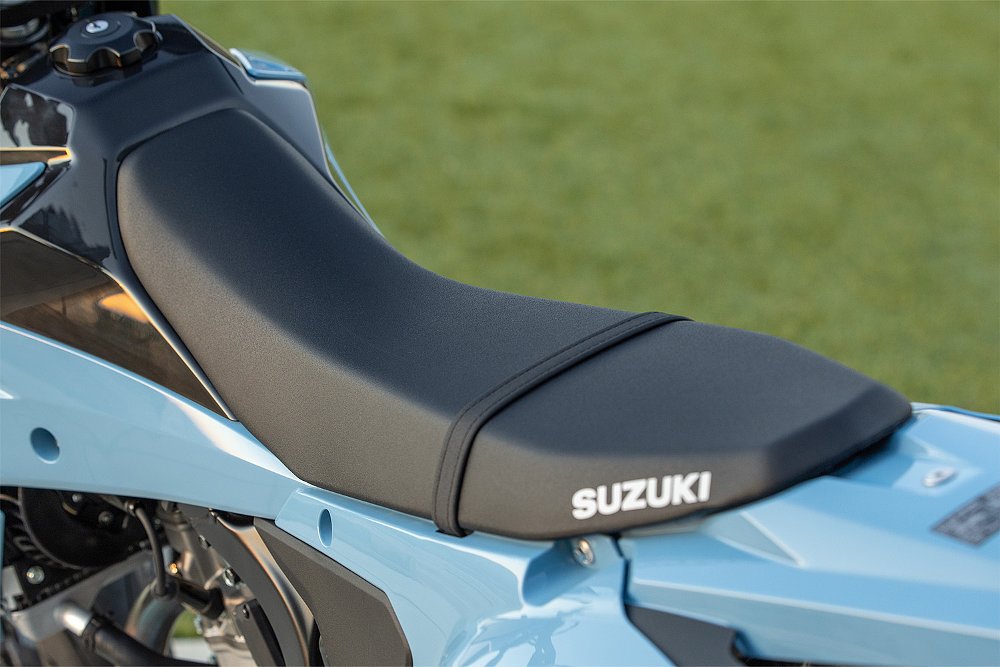
Hamamatsu’s homologation efforts are nothing if not thorough. That doesn’t mean the single is wholly transformed. It may run cleaner, but its claimed output of 37.5 horsepower (at 8,000 rpm) and 27.9 foot-pounds of torque (at 6,500 rpm) largely aligns with the outgoing mill. What doesn’t show up on the spec chart is the single’s improved road manners. That only becomes clear after firing it up.
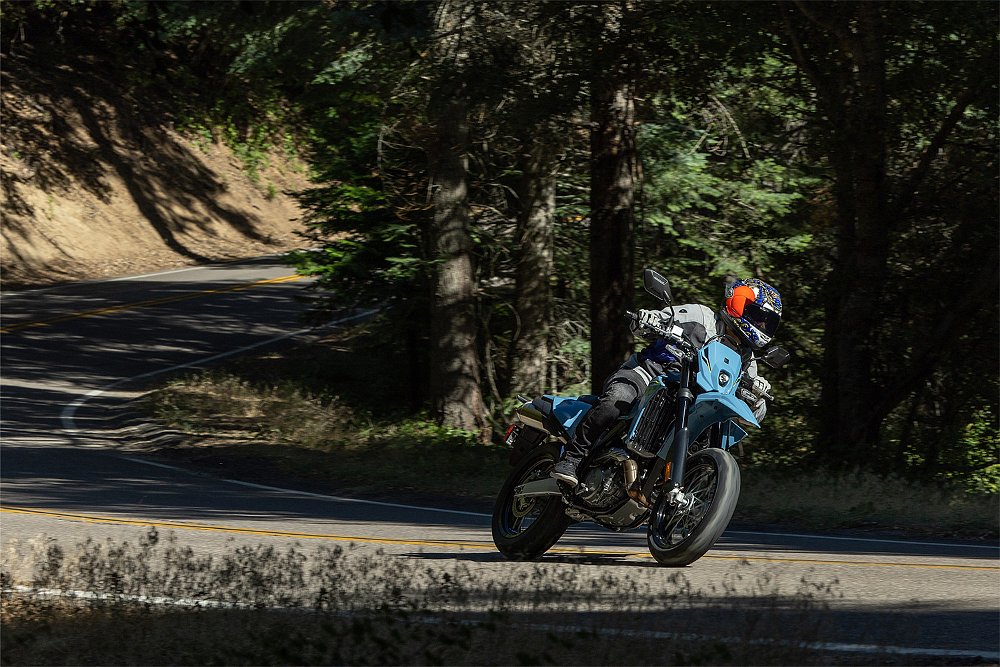
Fussy fueling clouds my memories of the DR-Z400SM. I can’t say the same for its successor. Tap the 4SM’s ignition switch and the bike revs to life without as much as a sputter or hiccup. Idle is stable and consistent, matched only by the progressive yet accurate throttle pickup. It’s a refreshing quality, especially when manufacturers regularly resort to lean fueling and pre-programmed flat spots to meet today’s stringent regulations. At the same time, don’t expect this DR-Z to blow your wig off.
Without the benefit of riding both bikes back-to-back, it's difficult to distinguish any performance gains. In other words, if you’ve ever flogged a DR-Z400SM, you have a pretty good grasp of the DR-Z4SM’s performance envelope. I credit much of that to the model’s five-speed gearbox, which retains the same gear ratios as its carbed counterpart. Critics were quick to condemn the transplanted transmission when Suzuki unveiled the new model, and for good reason.
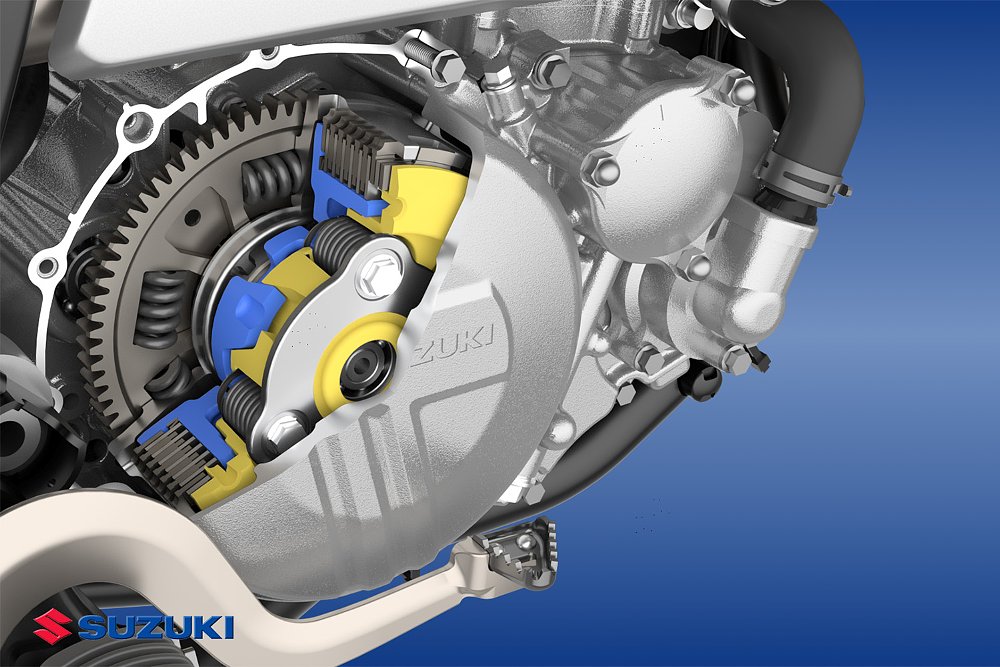
The DR-Z is long overdue for a sixth gear. That was evident years ago. It’s even more apparent today. Yes, my left foot searched for sixth gear more than once, but that can be avoided with time and practice. What’s unavoidable is the gap between the lower and higher gears. Initial throttle is responsive and crisp in first through third gears. The 4SM proved as much at the newly opened K1 Circuit in Winchester, California, where the lightweight SuMo pulled out of second- and third-gear corners with urgency.
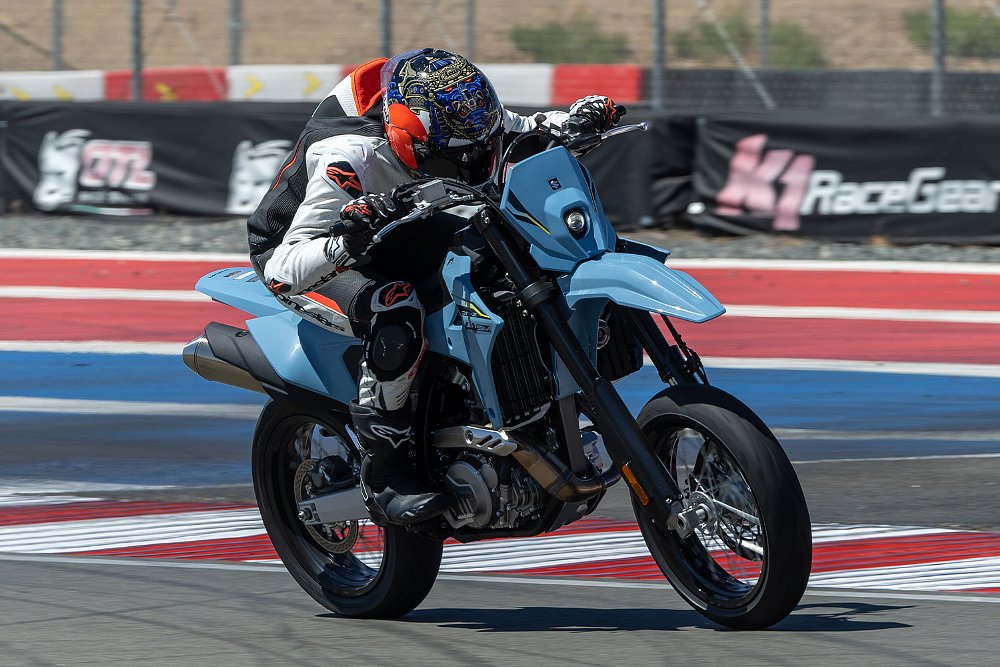
The opposite was true when riding up the nearby Palomar Mountain Road. Not only did the bike struggle to accelerate out of fourth-gear sweepers, it also crawled down the straights in top gear. To put it in context, I’ve never pinned a throttle more than the DR-Z’s, virtually willing it up to its 88-mph top speed. Be that as it may, outright performance has never been the supermoto’s top selling point. That title belongs to its chassis.
Nothing flashy
All DR-Z400 models featured a single backbone steel frame. To increase the platform’s torsional rigidity, Suzuki opted for a twin-spar steel frame mated to an aluminum-beam swingarm. Even the subframe receives a revision pass, with aluminum square tubing and cast parts prioritizing lightness and strength. Suspending that package is a 46 mm KYB inverted fork and KYB piggyback shock absorber. The compression- and rebound-adjustable front end yields 10.2 inches of travel, while the shock offers full adjustability and 10.9 inches of travel.
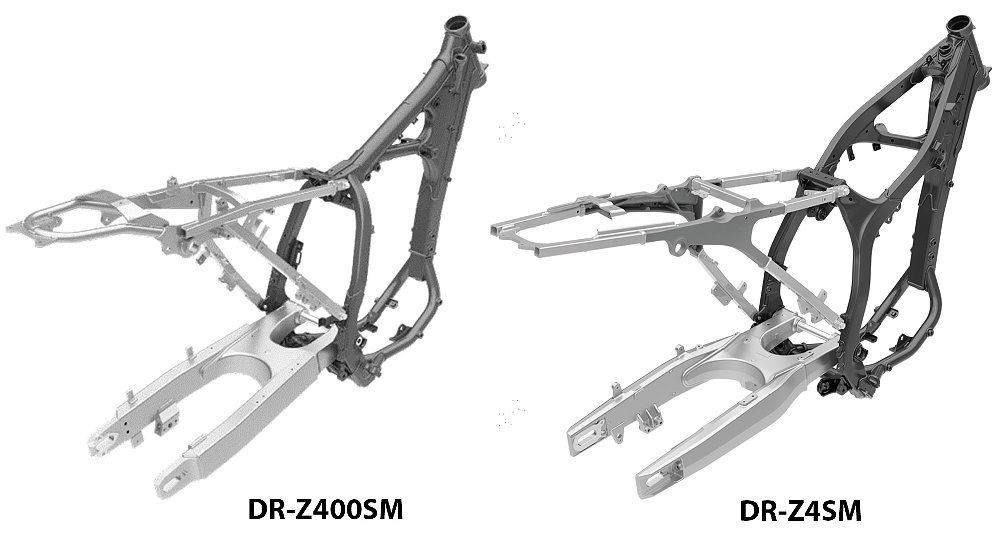
The SuMo’s trademark 17-inch wheels now roll on Dunlop Sportmax Q5A rubber, tires that Innes says have “more lateral grip for forward acceleration and absorbing braking force.” Most of those stopping duties fall to a two-piston Nissin caliper and 310 mm front disc, while a single-pot clamper and 240 mm rear rotor help shed speed and initiate slides. The chassis is nothing flashy, but it’s supermoto through and through.
The DR-Z4SM’s shortcomings are easy to identify. It’s updated, but it still feels dated, with an LCD screen that looks like it belongs in 2015 and a five-speed gearbox that’s literally from 2005. Suzuki doesn’t even offer a quickshifter for the SuMo in the Year of Our Lord 2025. Here’s the kicker: All of those first-world gripes fall by the wayside when you get the 4SM on a curvy road.
The DR-Z400SM was never the lightest bike in the supermoto bunch. With a claimed curb weight of 340 pounds, the model only gains 16 pounds In its DR-Z4SM era. Good luck detecting that extra weight when the bike’s in motion, though. The additional poundage does little to foil the SuMo’s nimbleness. Simply put, the 4SM is the definition of flickable. Chuck it in at corner entry, bury the front tire to the apex, and it only begs for more. It’s quick to bank on its side and even quicker to transition side-to-side. However, its faculties aren’t infinite. Several track sessions at the K1 Circuit put its limitations on full display.
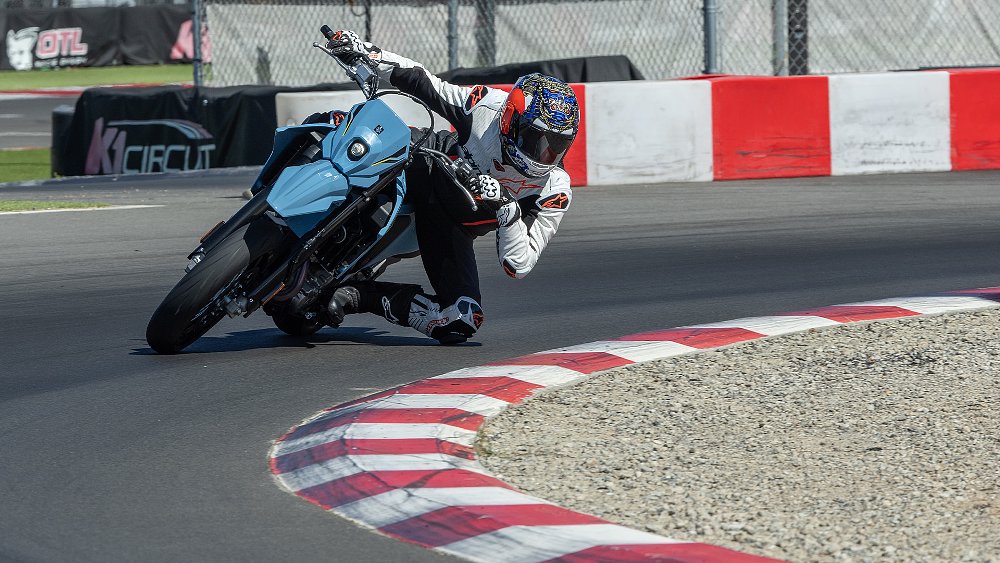
Suzuki sprung the 4SM for comfort. Considering the bike’s street-first application, it’s a fitting preparation. But when the pace picks up, all that comfort becomes a detriment to the model’s handling. Even routine braking sent the fork plunging through its stroke. Not to mention the shock's tendency to squat under hard acceleration. At times, it felt like riding a rocking horse on wheels. Only after asking Suzuki technicians to “stiffen up” the setup was the DR-Z truly up to the task.
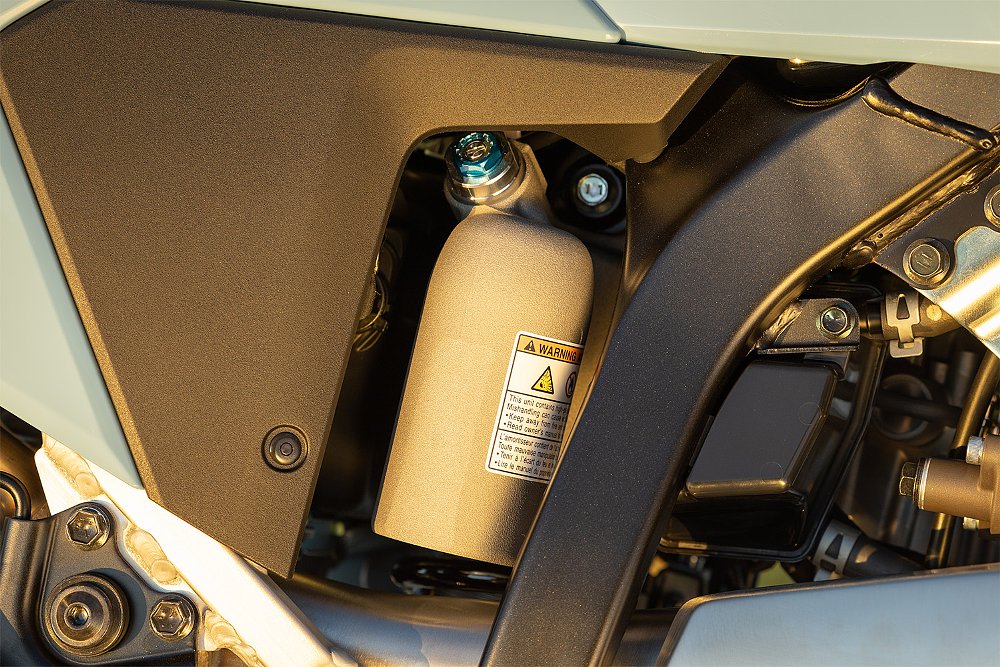
There was more stability under heavy braking and less wallowing mid-corner. Suzuki’s supermoto may not hold a candle to competition-only SuMos, but what it lacks in performance it makes up for with good times. Do its brakes lack both power and finesse? Definitely. Is its suspension tuned for the road? Of course it is. That does little to spoil the 4SM’s fun-loving nature, and Suzuki hopes that new electronics help bring that experience to even more riders.
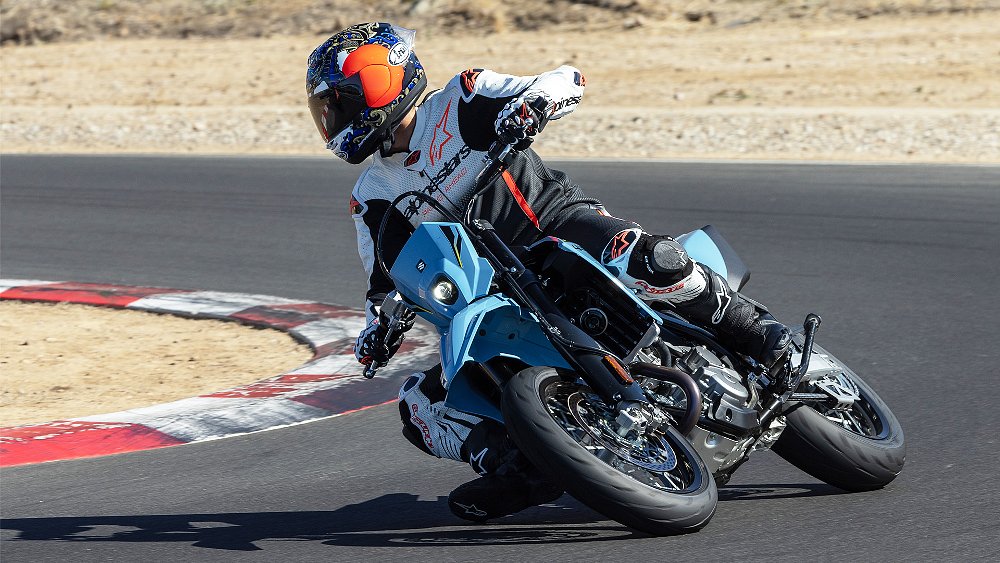
Equal opportunity enjoyment
A version of the Suzuki Intelligent Ride System (S.I.R.S.) has helped modernize Hamamatsu's recent offerings — the DR-Z4SM included. Whereas the model historically forewent electronic aids, the 4SM now embraces them. There are three ride modes (A, B, and C). Each adjusts throttle sensitivity, with A being the most aggressive, but all preserve the model’s max output. There are four traction control settings (1, 2, G, and Off). G mode allows the most wheelspin before intervening, while 2 is the most intrusive. Rear ABS is switchable, but front ABS is always active. These safety-oriented features allow DR-Z4SM owners to continuously develop their skills.
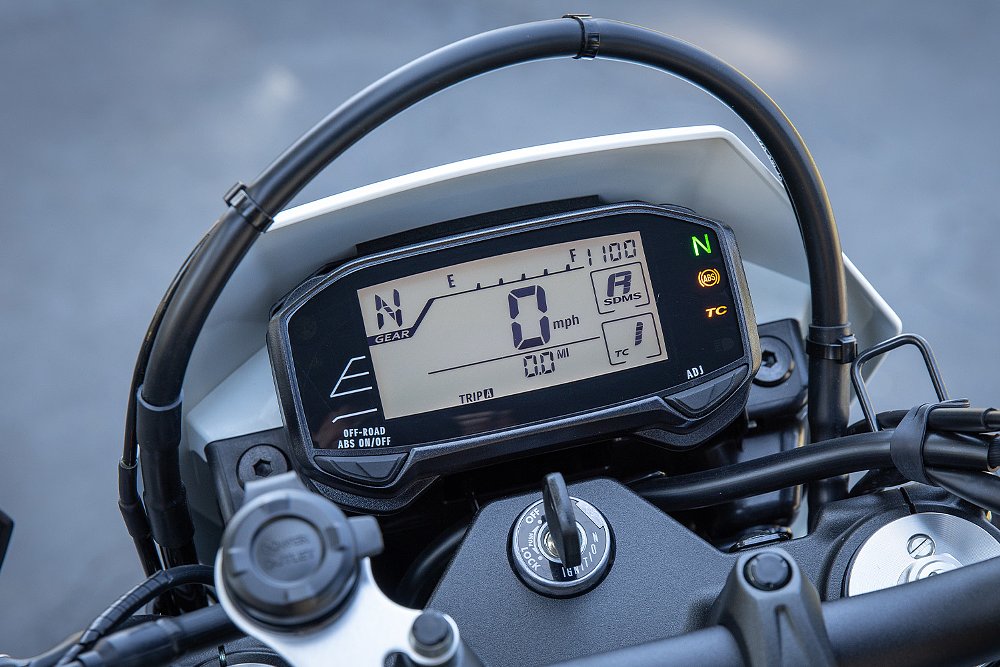
Navigating the system is a no-brainer, too. With just one Mode button and two rocker switches (up and down), the controls are easy as 1-2-3. Simply tap the Mode button to cycle between the ride mode and TC settings. Once the desired field is highlighted, the user can shuffle through the available options. Deactivating rear ABS is even simpler, but it requires the rider to hold down the ABS button along the bottom of the LCD screen. Though the system doesn’t allow changes while on the gas, I rarely required such accessibility. That’s because I often set my modes and promptly forgot about them. I expect many 4SM owners to do the same.
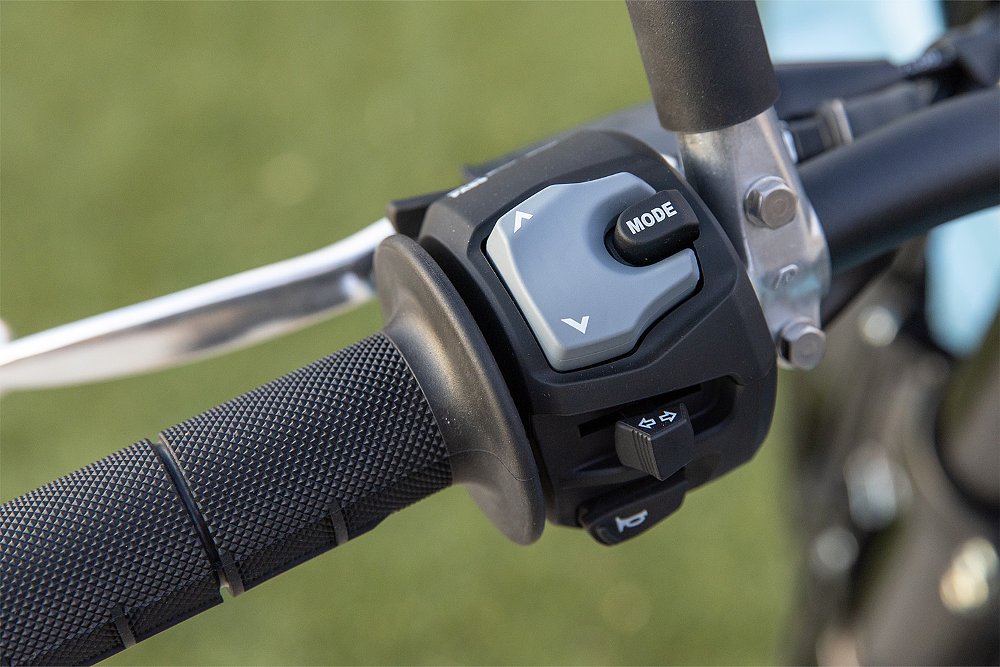
Now, there’s a case to be made against advanced rider aids on a 400 cc motorcycle. Your argument is strong if you only intend to ride the DR-Z4SM on the street. I experienced no rear-wheel slides (at corner exit, at least) even when hustling up and down Palomar Mountain. It was a slightly different account at the K1 Circuit.
I can count three corners where my rear wheel regularly stepped out. High lean angles, an eager throttle hand, and painted exit curbing often produce such results. Each time, I could feel the tire slide before traction control righted the ship. It was never abrupt or jarring. The system simply slowed the wheel speed enough to regain traction, and I was on my way, blasting down the next straight. Experienced riders may scoff at such safety nets, but if you plan to push the 4SM (and yourself) to the limit, S.I.R.S. has much to offer. But, does it tip the scales in the DR-Z's favor?
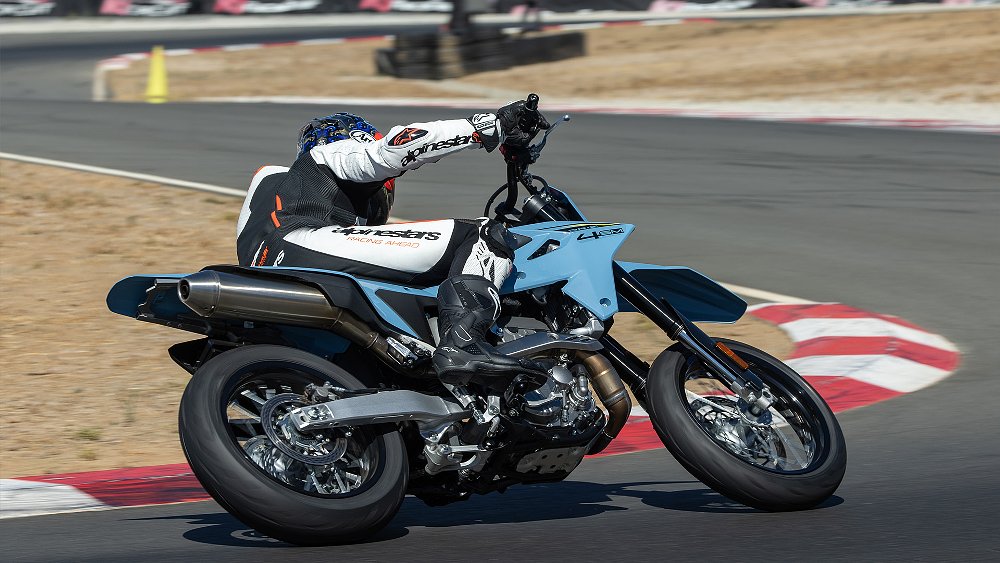
Familiar foes
Despite all the hoopla surrounding the new DR-Z4SM, the bike still delivers the DR-Z400SM experience. It rides like before, it’s just fueled better. It has more electronic gizmos, but they hardly infringe on the fun. Suzuki may see the 4SM as a revolution, but in the saddle, it feels more like an evolution. That can be a good thing or a bad thing. It all depends on what you’re looking for in a road-legal supermoto.
Of course, what you’re looking for also has to agree with the DR-Z4SM’s $8,999 price tag. When compared to its direct competitor, KTM’s all-new 390 SMC R ($5,499), the difference comes down to several factors (performance, reliability, etc.), but more than anything, it comes down to the $3,500 price gap. That’s a lot of greenbacks, if you ask me. Only individual customers can determine if the 4SM warrants the extra cost.
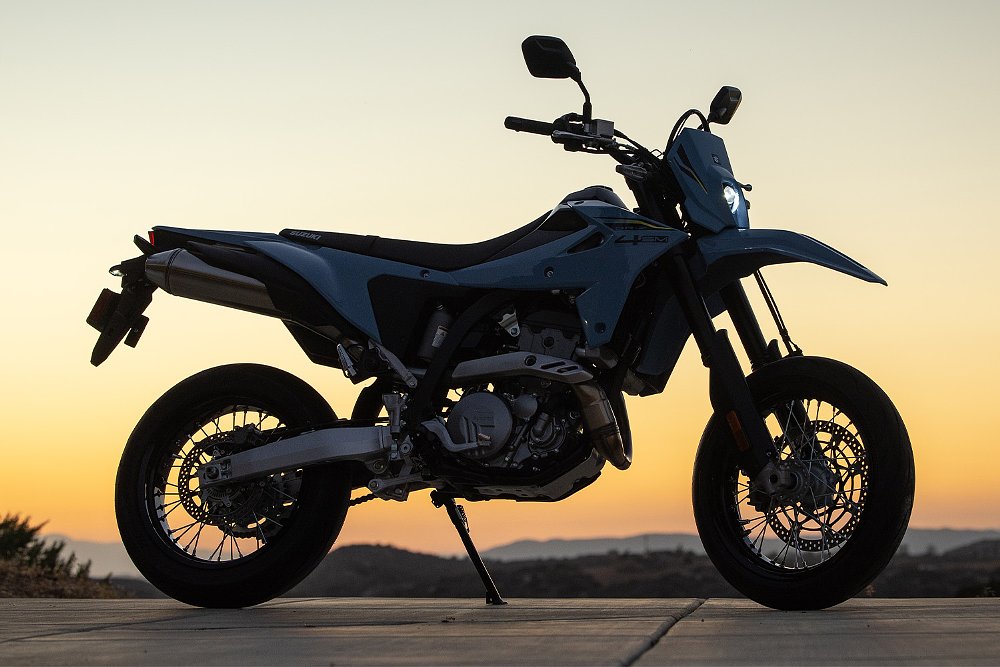
The SMC R isn’t the DR-Z4SM’s only rival, though. Its other foe is much more familiar. That’s because the 4SM also has to contend with used DR-Z400SMs. When it’s all said and done, the new model is a step forward for the DR-Z platform; it isn’t a leap forward. That means the 400SM remains a viable alternative. Plus, old DR-Z’s can be had for half of what a new one costs. If you don’t see the value in fuel injection, high-tech rider aids, a slipper clutch, or ABS (at either end), Suzuki’s newest SM probably doesn’t top your list. But, if you’re anything like me, someone receptive to the DR-Z4SM’s update — and has a clear disdain for carburetors — the choice is an easy one.
| 2025 Suzuki DR-Z4SM | |
|---|---|
| Price (MSRP) | $8,999 |
| Engine | 398 cc, liquid-cooled, four-valve, single |
|
Transmission, final drive |
Five-speed, chain |
| Claimed horsepower | 37.5 @ 8,000 rpm |
| Claimed torque | 27.9 foot-pounds @ 6,500 rpm |
| Frame | Steel twin-spar |
| Front suspension | KYB 46 mm fork, adjustable for compression and rebound damping; 10.2 inches of travel |
| Rear suspension | KYB shock, adjustable for spring preload, compression, and rebound damping; 10.9 inches of travel |
| Front brake | Nissin two-piston caliper, 310 mm disc with ABS |
| Rear brake | Nissin single-piston caliper, 240 mm disc with switchable ABS |
| Rake, trail | 26.5 degrees, 3.74 inches |
| Wheelbase | 57.7 inches |
| Seat height | 35.0 inches |
| Fuel capacity | 2.3 gallons |
| Tires | Dunlop Sportmax Q5A, 120/70R17 front, 140/70R17 rear |
| Claimed weight | 340 pounds |
| Available | Now |
| Warranty | 12 months, unlimited miles |
| More info | suzukicycles.com |

 Membership
Membership








